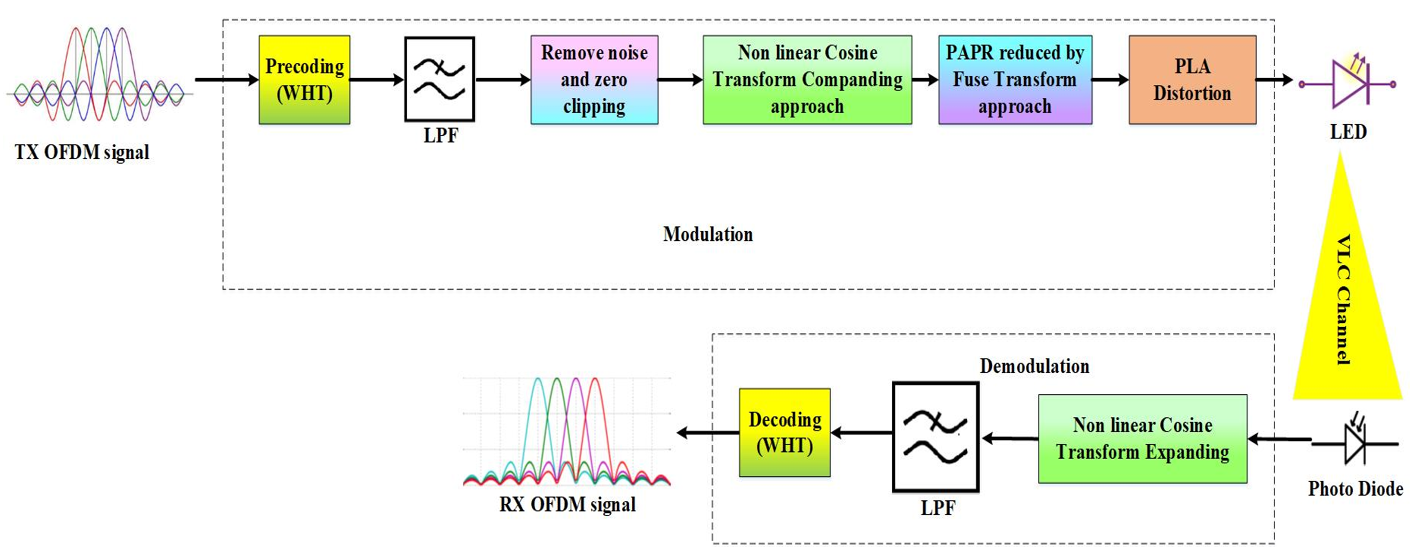LED Non-linear effects investigation in visible light communication via fuse transform approach with progressive learning algorithm based distortion

Keywords:
Visible light communication , progressive learning algorithm , LED, PLA, OFDMAbstract
Visible Light Communication (VLC) technology, which employs visible light modulation, broadly enables high-speed internet communication in the modern era. Due to its many advantages over conventional radio frequency, including a greater transmission rate, large bandwidth, low energy consumption, fewer health concerns, reduced interference, etc., VLC has recently grown in popularity. LEDs have drawn much attention for VLC implementation because of their exceptional qualities, including low cost and power consumption, but mainly because they can be utilized for lighting and communications. Moreover, LED modulation Scheme like OFDM leads to an excellent top-to-medium power ratio, including clipping with distortion. Here we report a novel Fuse Transform Approach with Progressive Learning Algorithm based Distortion in VLC to transmit the data, attenuate the excellent top-to-medium power ratio, including clipping and distortion, and investigate the LED non-linear effects of VLC.
URN:NBN:sciencein.jist.2023.v11.513
Downloads
Downloads
Published
Issue
Section
URN
License
Copyright (c) 2023 Sajitha Rani G L, Vijayakumar N

This work is licensed under a Creative Commons Attribution-NonCommercial-NoDerivatives 4.0 International License.
Rights and Permission



